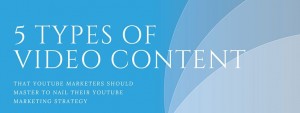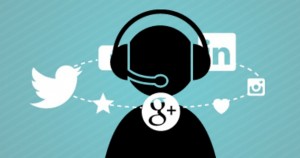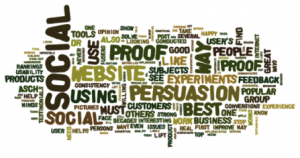— August 22, 2019

rawpixel / Pixabay
Think about the brands you’re most loyal to. Why did you become a return customer? What motivates you to purchase products or services from one company over another?
Most consumers are loyal to brands they feel like they know and trust. This is why you need to build customer relationships at every stage of your sales cycle is key to increasing retention and revenue.
After all, no one customer is the same, which means a catch-all sales approach is not an effective strategy. Furthermore, a customer’s business and needs are going to change over time. If you want to improve customer retention and upsell new products, you must be an active passenger on their customer journey — and adjust your sales process accordingly.
To help you get started, we’ve detailed four actionable tactics to build customer relationships during each stage of the journey through the sales cycle.
Building relationships with potential customers
The first stage of any sales cycle is prospecting. During this time, your goal is to gather sufficient customer data to determine if the prospect is worth pursuing. While doing so, you have the opportunity to start a relationship that could lead to multiple sales in the future. Use it to:
- Introduce yourself to your prospective customer
- Develop an initial rapport with your prospect
- Make a good first impression
The Challenge
Imagine your first day at a new job. You don’t know anyone, you’re understandably nervous, and you aren’t sure who to trust. Which co-workers will work with you, and which ones will try to outperform or compete against you?
Now imagine that same scenario, only this time one of your new co-workers is already a good friend of yours. You’re going to be much less skeptical, less nervous, and overall more confident on your first day. Why? Because you have someone in your corner, someone you know wants to help you succeed.
The same is true in the sales world. A new prospect will be less skeptical and more receptive of a sales pitch if it’s coming from someone they already know and trust. The question is: how do you begin to build a relationship with a potential customer you’ve never met?
The Solution: Connect on social media
An effective way to build customer relationships at the prospecting stage is to interact with leads on social media. Keep in mind, this stage is not about selling; it’s about establishing visibility and rapport with potential customers. Do this by:
- Engaging with your prospect’s social media posts (liking, commenting, etc.)
- Your leads will actively look to see who has commented on or liked their posts. Any engagement, no matter how simple or brief, will alert your leads to that fact that you exist and that you’re interested in their journey.
- Answering questions on Quora
- Answering your prospects’ questions on Quora helps you establish yourself as a valuable resource; someone who has solutions to your potential customers’ problems. You’re building trust with your leads by giving them solutions without asking for anything in return.
- Being active on Slack, Discord, or Facebook groups
- Online communities are great for introducing yourself to prospective customers. Platforms like Slack, Discord, and Facebook allow you to interact with multiple members at once or reach out to specific individuals with direct messaging. Build rapport with potential customers by becoming involved in the communities they care about.
- Offering valuable resources (links to courses, information, etc.)
- It doesn’t matter which social media platform you use to share these resources. The goal here is to prove to potential customers that you care about their challenges and needs. Establish rapport by providing something of value relevant to your potential customers’ needs.
Building relationships with qualified leads
After you’ve identified promising leads for your sales pipeline, the next stage of the sales cycle is “qualification.” Developing a relationship at this stage means showing your prospect that you understand their needs and have a desire to address them. Use this opportunity to:
- Establish a solid understanding of your prospect’s business model, value system, and mission.
- Prove your product or service is a solution to the challenges and needs specific to your prospect.
- Convince your prospect that your solution is better than your competitors’.
The Challenge
To prevent your sales pitch from falling flat, you must demonstrate that you’ve listened to your prospect’s challenges, objectives, and needs. At this point, you’ve laid the foundation for a relationship, but it’s still in the “acquaintance” phase. So how do you prove that you’re worth investing a relationship in?
The Solution: Personalize your pitch
Prove to your prospects that you know their brand as much as they do. Demonstrate how your product is the perfect (and only) sensible solution to their problem by:
- Presenting case studies that demonstrate how your product solved the problems of a company similar to that of your prospect’s
- Explaining how your product will specifically improve upon or elevate your prospect’s value system, mission, and brand identity
- As an example, let’s say you’re trying to sell CRM software to a prospective client. Brand research reveals that their #1 priority is customer happiness. With this knowledge, you can focus your pitch on how your CRM software improves customer satisfaction above all else.
- Comparing your solution to the product they’re currently using and explaining why yours is superior
Building relationships with loyal/repeat customers
Continuing to build customer relationships beyond the “won” stage in your sales cycle is critical if you want to increase retention and revenue. It doesn’t matter if a customer who purchased in the past isn’t currently looking to buy — the goal is to be there when they are ready. Building customer relationships after the “won” stage is an opportunity to:
- Upsell future products
- Stay high on your customer’s radar
- Win referrals
- Improve your brand’s reputation and authority
The Challenge
Building relationships with loyal customers can seem daunting when you’re faced with hitting tough quotas. How do you focus on customer retention and hit your mark? How do you keep customers engaged with your brand even when they aren’t looking to purchase anything?
The Solution: Stay engaged with CRM software
Customer relationship management software helps take this burden away by providing an all-in-one platform for easily organizing, managing, and continually building customer relationships. With the help of a CRM tool, you can easily stay engaged with and improve relationships with loyal customers by:
- Periodically sending stories, product or industry updates, informational articles, and other valuable resources relevant to your customer
- Sending targeted offers aligned with your customer’s purchasing history
- Checking in with customers and sending surveys to:
- make sure they’re happy with your product
- identify any additional needs you can assist with
- understand if and how the customer’s needs have changed and how you can help
Building relationships with unhappy customers
Regardless of the cause of a customer’s dissatisfaction, being keen to and promptly addressing negative feedback is an opportunity to keep a customer from churning and turn them into loyal customers. Build relationships with unhappy customers by:
- Proving to them that your #1 concern is their happiness and success
- Making sure they feel heard, no matter what
- Executing superb customer service
The Challenge
Unhappy customers are often frustrated and can be difficult to reason with. Even more challenging: some sales reps never even realize their customers are unhappy. Building relationships with unhappy customers requires an understanding of what went wrong and how to address the issue to keep those customers from churning.
The Solution: Monitor customer support tickets and online reviews
Unhappy customers are less likely to churn if their issues are addressed promptly, efficiently, and thoughtfully.
Think about it this way: let’s say you buy two separate pairs of sunglasses online — one from Company A, the other from Company B. You receive both pairs of sunglasses at the same time, but Company A forgot to include the behind-the-head safety strap.
You write a complaint to Company A explaining the situation and post a negative review on its Yelp page. Within 24 hours, a customer support representative has responded to your Yelp review, emailed you directly to express his deepest apologies, and shipped the missing safety strap plus an additional pair of sunglasses free of charge.
Which company are you more likely to purchase from in the future?
Studies have shown that 82% of shoppers specifically seek out negative reviews when researching a product or service. Additionally, seeing a brand respond to a negative review made 41% of consumers feel like the brand really cared about its customers.
As you can see, negative feedback is an excellent opportunity to build relationships with unhappy customers and prevent them from churning. Do so by:
- Monitoring customer support tickets and responding to them promptly
- Many CRMs are designed specifically to improve the efficiency of this flow. Use them to your advantage.
- Frequently checking and responding to user reviews on Google, Yelp, and other similar sites
- Not every customer is going to let you know directly when they’re unhappy. Being present on user-driven review sites proves to unhappy customers that you are proactive about and dedicated to customer happiness. Furthermore, commenting on a negative user review opens a direct line of communication with that customer. Offering a refund, free replacement, or other relevant solution will help to build a relationship with that customer and possibly prevent them from churning.
- Personally contacting an unhappy customer to ask how you can right the situation
- An unhappy customer’s dissatisfaction may be over a relatively minor issue or a result of user error. Regardless of the reason or severity, it’s important for your customers to feel heard and supported. Build the relationship up by contacting them to say, “I noticed you were having problems with {x}. I’d love to work with you to find the solution. Can you tell me a little more about the issue?”
Build customer relationships
When you build customer relationships, think of it as a muscle you have to train. Let’s say a friend has asked you to be their teammate in a 5K relay. After a few weeks of hard work at the gym, you’re ready for race day and help lead your team to victory.
Since you’ve completed your goal, you get complacent and stop training. Three months later, that same friend wants you to be their teammate in a 10K relay. But because you didn’t continue to build upon your training, you’re not in shape for the race and cause your team to lose.
The same can happen in sales. Building customer relationships on an ongoing basis is the training you need to be able to keep up with your customers’ evolving journey and lead them to success. Build your sales process around this mindset, and you’re guaranteed to increase customer retention and revenue.
Business & Finance Articles on Business 2 Community
(29)
Report Post







